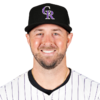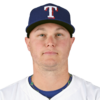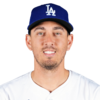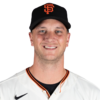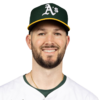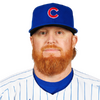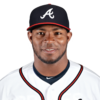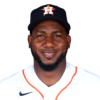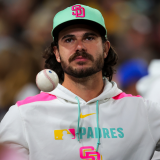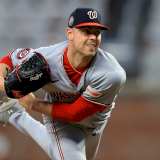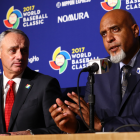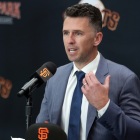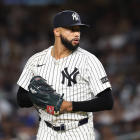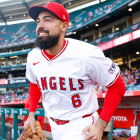
World Series 2017: How the NL champion Los Angeles Dodgers built their roster
The Dodgers have acquired more players through trades than by any other means
For the first time since 1988, the Los Angeles Dodgers are National League champions. They dispatched the Cubs in five games in the NLCS. The Dodgers are now four wins away from their first World Series championship since that 1988 season. They'll play the Houston Astros in the World Series when it begins Tuesday.
Like every team, the Dodgers were assembled through all sorts of different methods. They are not solely a product of their payroll, as Jonah Keri explained. No team is built exclusively through the draft, or trades, or free agency. It's not possible. Teams need to have success acquiring talent through every avenue available. The Dodgers have done exactly that. Let's look at how the 2017 Dodgers were built.
The Draft
The perfect world scenario for every team is building a homegrown core from within, through the amateur draft, then supplementing that core with trades and free agent signings. The Dodgers have done that. Their two best players are original Dodgers draft picks. Six of the 25 players on their NLCS roster were acquired through the amateur draft.
Cody Bellinger's story is an interesting one. The kid who set the NL rookie record with 39 home runs this season was once a rail thin high schooler in Arizona who scouts weren't sure would hit for power. Bellinger is the son of a big leaguer -- his father Clay Bellinger played four years in MLB and won World Series titles with the 1999 and 2000 Yankees -- and offered excellent makeup, athleticism, and work ethic as an amateur. The Dodgers popped him in the fourth round and have helped him develop into one of the best young sluggers in the game.
Perhaps the most unlikely Dodger on the postseason roster.Kyle Farmer is a 27-year-old rookie who made his MLB debut in September and found his way onto the NLDS and NLCS rosters as the third catcher. He's gone 0 for 4 as a pinch-hitter in the postseason so far. Farmer is widely regarded as an excellent catch-and-throw guy with enough hitting know-how to stick as a potential backup catcher long-term, plus he can play some third base as well.
At the time of the 2006 draft, Kershaw was considered the best high school prospect in the country after a huge senior year at his Houston high school shot him up draft boards. Six players were selected before Kershaw in 2006:
- Luke Hochevar, Royals
- Greg Reynolds, Rockies
- Evan Longoria, Rays
- Brad Lincoln, Pirates
- Brandon Morrow, Mariners
- Andrew Miller, Tigers
Kershaw was the 7th pick in 2006 and the No. 1 pitching prospect in baseball a year later. He made his MLB debut on May 25, 2008, less than two years after being drafted, which is a remarkable ascent for a high school player. Of course, everything about Kershaw is remarkable. He is the best pitcher of his generation and already a surefire Hall of Famer with three Cy Youngs, a career 2.36 ERA, and +57.4 WAR to his credit.
Had he not signed his then-pitcher record seven-year, $215 million contract in January 2014, Kershaw would've become a free agent during the 2014-15 offseason.
This has been a tough season for Joc Pederson, who earned a demotion to the minors and was only added to the NLCS roster after Corey Seager went down with a back injury. He was an obviously tooled up and athletic kid while at his Northern California high school, though he split time between baseball and football, and it was unclear how his natural skills would translate to the baseball field. The Dodgers gave Pederson a big over-slot bonus and bet on his athleticism, and have been rewarded handsomely despite a disappointing 2017 season.
Seager, like Bellinger and Kershaw, is a gift left to the Andrew Friedman regime by previous GM Ned Colletti. Colletti drafted Seager out of his North Carolina high school, where his hitting acumen and baseball bloodlines -- his brother Kyle Seager mans third base for the Mariners -- were obvious. The big concern with Seager was his size and defense. Scouts weren't sold on his ability to stay at shortstop long-term.
Not only has Seager remained at shortstop, but his innate hitting ability has proven to be even better than expected. He tore up the minors and assumed a spot near the top of Baseball America's annual top 100 prospect list for several years before making his MLB debut in September 2015. Seager was the unanimous NL Rookie of the Year in 2016 and is an NL MVP candidate in 2017. He missed the NLCS with a back injury, but is expected to be ready in time for the World Series.
Ross Stripling has a rather unique development path, and it's a story of perseverance. He was a football and basketball player in high school who didn't start playing baseball until he broke his leg, got bored, and began tossing around a baseball as a way to pass time. Stripling spent four years at Texas A&M before being drafted by Los Angeles. He underwent Tommy John surgery while in the minors and has since settled in as a serviceable swingman for the Dodgers.
Trades
The Dodgers acquired more players on their NLCS roster through trades than by any other means. Los Angeles has 14 trade pickups on their roster. They say the best trades are the ones that work out for both teams, and while that's true, the trades that work out far better than expected are the ones that lead to championships.
In the minors, Austin Barnes was a stathead favorite because of his high contact rates, his on-base ability, and his versatility. He's able to play the infield in addition to catcher. The Dodgers acquired him from the Marlins in the big Dee Gordon trade a few years back. Gordon, Dan Haren, and Mel Rojas Jr. went to Miami while Barnes, Andrew Heaney, Enrique Hernandez, and Chris Hatcher went the other way. (Heaney was immediately flipped for Howie Kendrick.) Barnes hit .289/.408/.486 during the regular season and has since supplanted Yasmani Grandal as the starting catcher.
At the 2017 trade deadline, when it was already crystal clear the Dodgers were the best team in baseball, Friedman & Co. weren't satisfied. They made three deals prior to the deadline, one of which brought Tony Cingrani from the Reds for Scott Van Slyke and minor leaguer Hendrik Clementina. Cingrani had a 2.79 ERA in 19 1/3 regular season innings with the Dodgers after the trade, during which he struck out 28 and walked six. He's thrown two scoreless innings in four outings this postseason.
Like I said, the Dodgers swung three trades at the 2017 deadline, the most notable of which sent Yu Darvish to Los Angeles. The Dodgers acquired him minutes for the deadline for three minor leaguers: Willie Calhoun, Brendan Davis, and A.J. Alexy. Calhoun, one of the best pure hitters in the minors, was the trade package headliner for the Rangers.
Darvish was good with the Dodgers during the regular season, throwing 49 2/3 innings with a 3.44 ERA in nine starts, but they didn't acquire him for the regular season. They acquired him for the postseason, and in two postseason starts, Darvish has allowed two runs in 11 1/3 innings. Darvish will be a free agent this offseason, so he's a pure rental. This was the ultimate win-now move for a front office that has been accused of being a little too timid in win-now situations in the past.
The longest tenured Dodger originally came over from the Athletics in a trade that sent Milton Bradley and utility man Antonio Perez to Oakland. Andre Ethier was just a minor leaguer at the time. He made his MLB debut a few months later and has never played for another franchise. Ethier missed most of the 2017 season with a neck injury, but he showed enough in September to make the postseason roster as an extra outfielder and reserve lefty bat. He's gone 2 for 8 with a home run in the postseason so far.
Righty reliever Josh Fields will get a chance to face his old team in the World Series. The Dodgers picked up Fields at least year's trade deadline for minor league prospect Yordan Alvarez, and in 76 1/3 innings since, he owns a 2.83 ERA with 82 strikeouts. Fields had a 4.53 ERA in parts of four seasons with Houston. He's thrown only one inning in the postseason even though he seems to warm up every single game.
For much of the offseason the Dodgers tried to snag Brian Dozier from the Twins, though it never did come together. Logan Forsythe was Plan B. The Dodgers got him from the Rays straight up for pitching prospect Jose De Leon, who battled injury and ineffectiveness in 2017. Forsythe did not have a good regular season overall, hitting .224/.351/.327 in 439 plate appearances, though he a lot of damage against lefties. He authored a .290/.418/.452 batting line against southpaws. So far this postseason Forsythe is 6 for 19 (.316) with more walks (five) than strikeouts (three).
In his first significant move at the helm of the baseball operations department, Friedman shipped the popular but expensive and (at least slightly) overrated Matt Kemp to the division rival Padres for the sneaky productive Grandal. The full trade details:
- Dodgers get: Grandal, Joe Wieland, Zach Eflin
- Padres get: Kemp, Tim Federowicz, and $32 million
At the time of the trade Kemp had $107 million left on his contract, so the Dodgers ate about 30 percent of it. Since the trade, Grandal has hit .237/.332/.448 (109 OPS+) with +6.4 WAR while Kemp has hit .269/.310/.470 (109 OPS+) with -0.7 WAR. And WAR doesn't account for Grandal's elite pitch-framing skills either. Kemp is the bigger name, but Grandal's the better player, and the Dodgers scooped him up when they had a chance.
It wasn't until August that the Dodgers picked up Curtis Granderson as a veteran bench bat. And all they had to give up was relief prospect Jacob Rhame. Granderson has not played well with the Dodgers at all -- he hit .161/.288/.366 in 36 regular season games after the trade and is 1 for 15 with eight strikeouts in the postseason -- but who cares? It was a low-cost move to potentially improve the bench. It's the kind of move every contending team should be making, that move to improve the margins of the margin. This one didn't work out. That's baseball.
Hernandez, along with Barnes, was part of the big Marlins trade that sent Gordon to Miami. He's become a very good utility man and platoon player, so good that he swatted three home runs in Game 5 of the NLCS on Thursday. By the way, Hernandez was originally drafted by the Astros, so he'll get to face his old team in the World Series. The 'Stros shipped Hernandez to the Marlins in the Jake Marisnick/Jarred Cosart trade in 2014.
At the 2016 trade deadline the Dodgers bought into Rich Hill's rebirth and acquired him (and Josh Reddick) from the A's for pitching prospects Jharel Cotton, Grant Holmes, and Frankie Montas. Things went so well the Dodgers re-signed Hill to a three-year deal worth $48 million as a free agent this past offseason. He threw 135 2/3 innings with a 3.32 ERA this season and has been the club's No. 2 starter behind Kershaw this postseason.
(Yeah, technically Hill was a free agent signing, but we're looking at how the Dodgers originally acquired players on their postseason roster, so we're lumping him in the trades.)
This is going to go down as one of the most lopsided trades in recent baseball history. Chris Taylor was a light-hitting infielder with the Mariners when they sent him to the Dodgers for former top prospect Zach Lee in a very minor trade last year. It was an easy to overlook deal and, at the time, Lee was the big name. He's a former first rounder and it seemed like he'd get a chance to stick in Seattle's rotation for a bit. It didn't happen.
Meanwhile, Taylor was one of the biggest breakout players in baseball this season, hitting .288/.354/.496 with 34 doubles, 21 homers, and 17 steals in 140 games while playing three infield positions and two outfield positions. He was then named co-MVP of the NLCS. Give the Dodgers a truth serum, and I think they'd tell you they never expected Taylor to be this good, though I'm certain they saw him as an undervalued asset they could turn into a productive player.
As part of their rebuild the Phillies traded away just about all their notable veterans, including heart-and-soul player Chase Utley. The Dodgers added him at the 2015 trade deadline for prospects Darnell Sweeney and John Richy, and they've subsequently re-signed Utley as a free agent in each of the last two offseasons. He's settled into a part-time role with Los Angeles, but make no mistake, Utley is still a force to be reckoned with in the clubhouse. Seager has credited Utley's leadership for helping him become the player he is today.
Tony Watson, along with Cingrani, was one of two lefty relievers the Dodgers acquired at the trade deadline to bolster their bullpen. The former Pirates closer threw 20 innings with a 2.70 ERA for Los Angeles during the regular season and has allowed two runs in 3 1/3 innings so far in the postseason. Watson is an impending free agent, so he's a pure rental. The Dodgers sent minor leaguers Angel German and Oneil Cruz to Pittsburgh in the trade.
You know you've made a good trade when the opposing GM admits he made a colossal mistake on Twitter. John Coppolella, who is no longer the Braves GM (not because of the trade), sent Alex Wood to the Dodgers in a big three-team deal at the 2015 trade deadline. By June 2016, Coppolella was wishing he could take it back.
Yes -- bad trade for us and one that I wish we had back -- all we can do is learn from it and move forward https://t.co/LXvZPoKSwK
— Atlanta Braves (@Braves) June 24, 2016
Not often you'll hear a GM admit defeat like that, but credit to Coppolella for being honest. The Dodgers completely swindled the Braves in this trade. Here are the details:
- Dodgers get: Wood, Bronson Arroyo, Luis Avilan, Jim Johnson, Mat Latos, Michael Morse, Jose Peraza
- Braves get: Zachary Bird, Hector Olivera, Paco Rodriguez, competitive balance draft pick
- Marlins get: Victor Araujo, Jeff Brigham, Kevin Guzman
For all intents and purposes, the Dodgers took on Arroyo's contract and Morse's contract to get Wood. Olivera was the key piece going the other way, and he was so bad the Braves traded him to the Padres a year later to get Kemp (baseball is a flat circle), and the Padres released Olivera immediately. They just wanted to unload Kemp's contract.
Wood has a 3.34 ERA in 283 innings with the Dodgers and is the team's No. 4 starter this postseason, but would be the No. 2 on many teams.
Free Agent Signings
Despite having the highest payroll in baseball, the Dodgers have not spent lavishly on free agents during the Friedman era. The most money they've spent to sign a free agent signed away from another team is a mere $48 million, if you can believe that. Believe it or not, only two players on the postseason roster originally signed with the Dodgers as free agents, and neither received a guaranteed big league deal.
Morrow, who was one of the six players selected ahead of Kershaw in the 2006 draft, hooked on with the Dodgers back in January after years and years of injuries. He threw only 136 2/3 innings from 2013-16. The Dodgers gave Morrow a minor league contract and he proceeded to allow 18 runs in 20 innings with the Triple-A affiliate. The team liked his stuff though, so before he could trigger an opt-out clause in his contract they called him up. Morrow threw 43 2/3 innings with a 2.06 ERA and 50 strikeouts against only nine walks after being called up, and he's taken over as the team's primary setup man. Go figure.
Has there been a better minor league contract handed out in the last, oh, 25 years? I'm not sure. The Dodgers signed Justin Turner after the Mets non-tendered him, thinking he could be a solid depth option and utility player. Then he retooled his swing and turned into one of the best hitters in the NL. Good enough to earn him a four-year contract worth $64 million this past offseason.
Since signing with the Dodgers, Turner has hit .303/.378/.502 (139 OPS+) with 71 home runs in 516 games, including .322/.415/.530 (149 OPS+) this past season. He then went 6 for 18 (.333) with two home runs in the NLCS and was named co-MVP with Taylor. Credit goes to Colletti for this one. He originally signed Turner and Turner blossomed into a stud under his watch. Friedman wisely kept him around.
International Free Agency
There are two avenues to acquire amateur talent: the draft and international free agency. The draft gets all the hype and understandably so, but the so many of baseball's greatest players are from outside the United States. Those players all signed with a club as an international amateur once upon a time. Three notable Dodgers on the NLCS roster originally signed with the team as international amateurs.
Once upon a time Kenley Jansen was a light-hitting catcher. The Dodgers signed him out of Curacao as a 16-year-old in 2004, and after a few seasons, it became clear he wasn't going to hit enough to reach the big leagues. Jansen is a career .229/.310/.337 hitter in nearly 1,000 minor league plate appearances. Even at catcher, where the offensive bar isn't very high, that's not going to cut it.
The Dodgers decided to put Jansen on the mound in 2009 and a year later he was in the big leagues. Three years later he was closing and seven years later he signed a five-year contract worth $80 million. The move to the mound worked out pretty well, eh? Jansen is arguably the best closer in baseball right now, one who has shown he can get four or five outs at a time to nail down a postseason save. What a weapon he is.
Kenta Maeda was not a typical international free agent. He didn't sign with the Dodgers as an amateur. He signed after spending eight years with the Hiroshima Carp in Japan. Hiroshima posted him for MLB teams during the 2015-16 offseason, and eventually he came to terms with the Dodgers on a unique eight-year contract. The deal includes $25 million guaranteed plus $75 million in escalators. A preexisting elbow injury led to the unique contract. The Carp received the maximum $20 million release fee for losing Maeda.
In his two regular seasons with the Dodgers, Maeda has a 3.80 ERA in 310 innings, and this postseason he's turned into a bullpen monster. Fifteen up, fifteen down for Maeda The Reliever in October, including seven strikeouts. By my unofficial count, Maeda has earned $13.8 million of that $75 million in playing time based bonuses already.
When the Dodgers signed Yasiel Puig, it sent a shockwave through baseball. Baseball America international guru Ben Badler spoke to several evaluators who were shocked by the contract at the time. "I don't know. I don't know what's going on in Dodger land. They must have seen something," said one evaluator to Badler.
Puig, who was 21 at the time of the signing, firmed up his body soon after signing and showed the long layoff -- Puig did not play in competitive games for over a year after defecting from Cuba -- had no ill-effects. He reached the big leagues within a year of the signing and was an impact player right away, hitting .305/.386/.502 (151 OPS+) from 2013-14. The 2015-16 seasons were disappointing, but Puig had a very good 2017 and has been a monster in the postseason, going 12 for 29 (.414) with a home run, six walks, and three strikeouts.
Other Notables
The Dodgers have the deepest organization in baseball. It's not just about the starting lineup and the rotation. The 15-25 spots on their 25-man roster are strong, as are spots 30-40 on their 40-man roster. They have quality options throughout the organization, which is one of the reasons they won 104 games. Their own internal replacement level is quite high. Here are some other notable players who were factors at various points in 2017.
Avilan came over as part of the big trade with the Braves that also sent Wood to the Dodgers. He's been a valuable up-and-down depth arm since then, throwing 81 1/3 innings with a 3.43 ERA for Los Angeles. That includes a 2.93 ERA in 46 innings in 2017. Avilan has been out this postseason with a shoulder injury.
Like Jansen, Pedro Baez was once a position player. He played third base from 2007-13, during which he hit .248/.309/.392 in over 2,000 minor league plate appearances. The Dodgers decided that was enough, so they stuck Baez on the mound, where he has since emerged as a solid -- albeit frustrating to watch given his slow pace -- middle reliever.
The unsung hero of the NLCS. Charlie Culberson stepped in at shortstop when Seager went down with a back injury, then went 5 for 11 (.455) with two doubles and a triple in the series. The Dodgers signed Culberson to a minor league contract following the 2015 season and have mostly stashed him in Triple-A as depth since. He's come in handy this postseason. That's for sure.
A back injury has sidelined veteran first baseman Adrian Gonzalez for most of the second half and the entire postseason this year. He hasn't even been able to travel with the team as he recovers. Gonzalez, of course, came over in that massive trade with the Red Sox in 2012. The details:
- Dodgers get: Gonzalez, Carl Crawford, Josh Beckett, Nick Punto
- Red Sox get: James Loney, Ivan De Jesus Jr., Allen Webster, Rubby De La Rosa, Jerry Sands
The Dodgers, in one of their first significant moves since the new Magic Johnson fronted ownership group took over, assumed over $250 million in salary obligations with the trade. The Red Sox used the newfound financial flexibility to sign several free agents who helped them win the 2013 World Series. Gonzalez, meanwhile, was a middle of order bat for the Dodgers' four postseason teams from 2013-16 before his back started acting up this year.
In terms of guaranteed dollars, Brandon McCarthy's contract is the largest the Friedman regime has given to a free agent lured from another team. Pretty crazy, huh? McCarthy missed most of the 2015 and 2016 seasons with Tommy John surgery, and this year he threw 92 2/3 innings with a 3.98 ERA while dealing with knee and blister problems. McCarthy is not on the postseason roster.
Similar to Maeda, Hyun-Jin Ryu was not a normal international free agent. He spent seven years with the Hanwha Eagles in Korea before coming over to MLB. The Dodgers paid a $25.7 million posting fee to Hanwha to secure his negotiating rights, then signed him to a six-year contract worth $36 million. Ryu was fantastic from 2013-14 before major shoulder problems sabotaged his 2015 and 2016 seasons. He returned this year to throw 126 2/3 innings with a 3.77 ERA. Ryu is not on the postseason roster but was considered for a bullpen spot in both the NLDS and NLCS.




